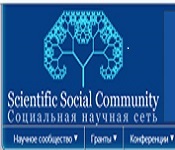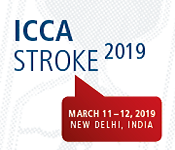With the increasing ability to regulate infectious and nutritional diseases in developed countries, there has come the belief that genetic diseases are a serious explanation for disability, death, and human tragedy. Rare, indeed, is that the family that's entirely freed from any known genetic disease. Many thousands of various genetic disorders with defined clinical symptoms are identified. Of the three to six percent of new-borns with a recognized congenital anomaly, a minimum of half involve a predominantly genetic contribution.
Molecular microbiology is that the branch of microbiology dedicated to the study of the molecular basis of the physiological processes that occur in microorganisms. Molecular diagnostics is mentioned because the detection of genomic variants, getting to facilitate detection, diagnosis, sub classification, prognosis, and monitoring response to therapy.
Cancer begins in your cells. Normally, our body forms new cells as we'd like them, replacing old cells that die. the expansion of additional cells can form a mass called a tumor. Tumors are often benign or malignant. Benign tumours aren't cancer while malignant ones are. Cells from malignant tumors can invade nearby tissues. They will also break free and spread to other parts of the body.
Stem cells are undifferentiated biological cells which will differentiate into specialized cells and may divide to supply more stem cells. They’re found in multicellular organisms. In mammals, there are two broad sorts of stem cells: embryonic stem cells, which are isolated from the inner cell mass of blastocysts, and adult stem cells, which are found in various tissues..
Plant Genomics is the part of molecular biology working with the structure, function, evolution, and mapping of genomes in plants. Genomics is a branch of genetics that is concerned with the sequencing and analysis of organism's genome.
Includes a good range of mechanisms that are employed by cells to extend or decrease the assembly of specific gene products (protein or RNA). Sophisticated programs of organic phenomenon are widely observed in biology, for instance to trigger developmental pathways, answer environmental stimuli, or adapt to new food sources. Virtually any step of organic phenomenon are often modulated, from transcriptional initiation, to RNA processing, and to the post-translational modification of a protein. Often, one gene regulator controls another, and so on, during a gene regulatory network
The capability to form specific modifications to the human gene has been an objective in medical since; gene is that the recognition of the essential unit for heredity. Therefore, gene therapy is defined because the capability of genetic improvement through the correction of modified genes or specific modifications that focuses on therapeutic treatment. This therapy became possible through the advances of genetics and bioengineering that enabled manipulating vectors for delivery of additional chromosomal material to focus on cells. one among the main focuses on this system is that the optimization of delivery vehicles (vectors) that are mostly plasmas, unstructured or viruses. These viruses are more often investigated thanks to their excellence of infected cells and inserting their genetic material.
In recent years, somatic cell nanotechnology has emerged as a replacement of exciting field. The importance of nanotechnology, nanostructures, and nanomaterial’s to the basic developments in stem cells-based therapies for injuries and degenerative diseases has been recognized. generally, the results of properties and structure of nanomaterials on the accretion and differentiation of stem cells became a replacement of integrative border in reconstruction medicine and material science
-
Nanoparticles: Cell Tracking, And Endocytosis
-
Nano vaccines
-
Nanomaterial’s And Nano engineering
-
Nanotechnology For gene-splicing
-
Nanotechnology For Creating somatic cell Niche
-
Nanoparticle Toxicity To Stem Cells
The skin gradually re-establishes itself for the duration of grown-up life, and therefore the follicle experiences a never ending cycle of development and decay. Microorganisms (Stem Cell’s) lives within the epidermis and follicle guarantee the support of grown-up skin equilibrium and hair recovery; however they likewise participate within the fix of the epidermis after wounds.
-
Stem Cells With In Adult Skin Epithelium
-
Signalling And somatic cell Fate Specification within the Skin
-
Bone Morphogenetic Protein Signalling
-
Notch Signalling
The number of people with chronicle wounds has been increasing worldwide thanks to a fading population, diabetes, obesity, and disorder. In the U.S, almost seven million people have chronic skin ulcers. Many restorative approaches are used. Whatever, the treatment comes out aren't always ideal due to failure to realize complete wound closure in around 60% of cases, scarring, and high rate of recurrence. However, there's a requirement of simpler therapies. Stem cells offer promising possibilities. Pre-clinical studies have shown that bone- or adipose tissue-derived mesenchyme stem cells (MSCs) have a competitive advantage over other sorts of stem cells thanks to their better defined multi potent differentiating potential, paracrine effects, immune modulatory properties, and safety. Therefore, large controlled clinical trials are needed to look at the capabilities of MSCs in humans and to assess their safety profile. during this review, we highlight emerging treatments in tissue regeneration and repair and supply some perspectives on the way to translate current knowledge about stem cells-both multi potent and pluripotent-into the clinical approach for treating patients on heal wounds
-
Novel somatic cell Therapy For Knees
-
Novel somatic cell Therapy For Arthritis
-
Novel somatic cell Therapy For Cancer
-
Novel somatic cell Therapy For Hair loss
Cell therapy (also called cellular transplantation, cell therapy, or cytotherapy) may be a therapy during which possible cells are injected, implant or embed into a patient so as to effectuate a medicinal effect, for instance , by transplanting T-cells capable of fighting cancer cells via cell-mediated immunity within the course of immunotherapy, or grafting stem cells to regenerate diseased tissues.
Cell therapy commenced within the nineteenth century when scientists experimented by injecting material during a attempt to prevent and treat illness. However, such try didn’t produced any positive benefit, subsequent research was found within the mid twentieth century that human cells might be wont to help prevent the physical body rejecting transplanted organs, leading in time to successful bone marrow transplantation has become common practice in treatment for patients that have compromised bone marrow after disease, infection, radiation or chemotherapy.
-
Allogeneic Cell Therapy
-
Autologous Cell Therapy
-
Xenogeneic Cell Therapy
The capability to make specific modifications to the human gene has been an objective in medical since; gene is the recognition of the basic unit for heredity. Therefore, gene therapy is defined as the capability of genetic improvement through the correction of modified genes or specific modifications that target therapeutic treatment. This therapy became possible through the advances of genetics and bioengineering that enabled manipulating vectors for delivery of extra chromosomal material to target cells. One of the major focuses on this technique is the optimization of delivery vehicles (vectors) that are mostly plasmas, unstructured or viruses. These viruses are more often investigated due to their excellence of infected cells and inserting their genetic material.
-
Substitution of the adenosine deaminize deficiency
-
Substitution of α 1-antitrypsin
-
Improvement of immune function
-
Tumour removal
-
Chemo protection
-
Enzymatic substitution
-
Cytokine release
Immunotherapy is taken into account as a kind of cancer treatment that helps your system to fight against cancer. The system helps your body to fight with infections and other diseases. it's consists of organs and white blood cells and tissues of the lymph system.
Immunotherapy may be a sort of biological therapy. Organic therapy may be a sort of treatment that we use from the substances made up of living organisms to treat cancer.
There are many sorts of cancer treatment. Which sorts of treatment that you simply can prescribe will depend upon the sort of cancer that you have and the way advanced it's . Some people that were facing with cancer will have just one treatment. But most of the people have a rear case together of treatments, like surgery with chemotherapy and also with radiotherapy. once you need a treatment for cancer, you've got tons to think and study . it's normal to feel affected and confused. But, talking together with your doctor and learning about which sort of treatment you'll have can assist you feel better and may control the fear.
-
Surgery
-
Radiation Therapy
-
Chemotherapy
-
Immunotherapy
-
Targeted Therapy
-
Hormone Therapy
-
Stem Cell Transplant
At this scenario Cancer therapies aren't basing on surgery, radiation, and chemotherapy. Because of these three methods cause risk damage to normal tissues or incomplete destruction of the cancer. Nano- therapy means to focus on chemotherapies and also collectively to cancerous cells and neoplasms, guide in surgical resection of tumour and enhance the therapeutic competence of radiation-based and therefore the other current based treatment methods. Of these together can decrease the danger to the patient and an increased probability of survival.
Epigenetics is rising to eminence in biology as a mechanism by which environmental factors have intermediate-term effects on organic phenomenon without changing the underlying genetic sequence. It can occur through the precise methylation of DNA bases and modification of histones. There are wide-feeding implications for the gene-environment contest and epigenetic mechanisms are causing a revaluation of the many traditional concepts like heritability. The reversible nature of epigenetics also provides conceivable treatment or prevention prospects for diseases previously thought hard-coded into the gene. Therefore, we consider how growing knowledge of epigenetics is altering our understanding of biology and medicine, and its implications for future research.
-
Covalent modifications
-
RNA transcripts
-
MicroRNAs
-
mRNA
-
sRNAs
-
Prions
-
Structural inheritance
-
Nucleosome positioning
-
Genomic architecture
















